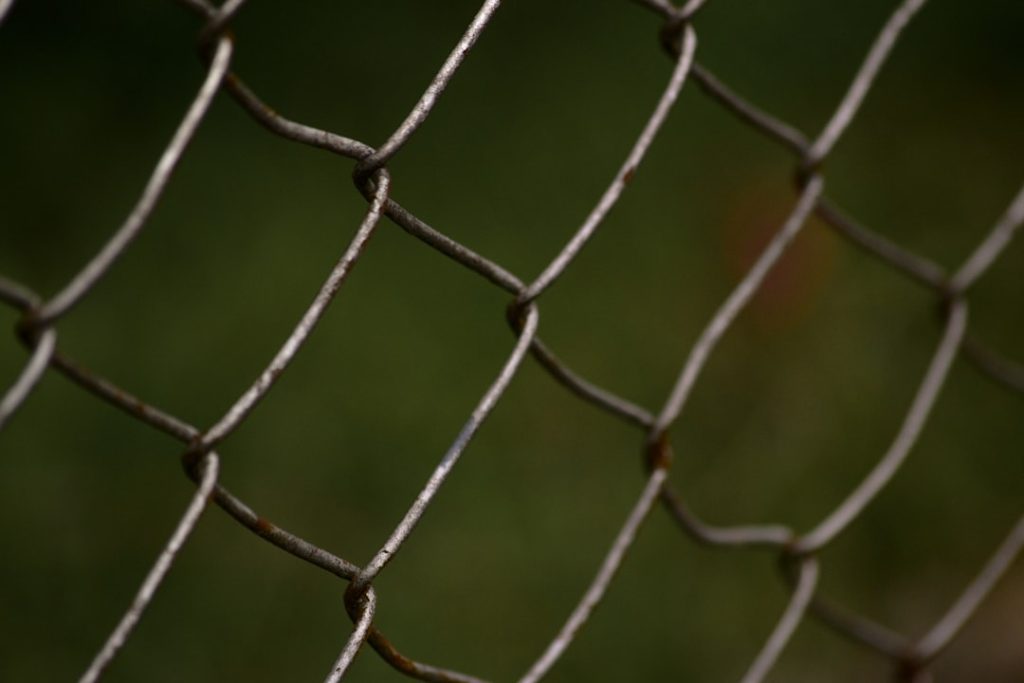Chickens exhibit natural curiosity and social behavior, with a strong instinct to explore their environment. They are creatures of habit, often returning to familiar roosting and foraging locations. Understanding these behavioral patterns is essential for effectively deterring chickens from undesired areas.
By recognizing their natural tendencies, one can anticipate potential problem areas and implement preventive measures. Chickens are highly sensitive to environmental changes and can be easily startled by sudden movements or loud noises. This sensitivity presents both challenges and opportunities in deterring them.
While chickens may initially be frightened by deterrents, they can quickly adapt to ineffective measures. This adaptability necessitates the use of varied and evolving deterrent strategies. By comprehending these behavioral traits, one can develop effective methods to discourage chickens from unwanted areas while minimizing unnecessary stress to the birds.
Table of Contents
- 1 Creating Physical Barriers
- 2 Using Visual Deterrents
- 3 Implementing Scent-based Repellents
- 4 Providing Alternative Roosting Spots
- 5 Training and Redirecting Chickens
- 6 Seeking Professional Help
- 7 FAQs
- 7.1 What are some effective methods for keeping chickens off the driveway?
- 7.2 Why is it important to keep chickens off the driveway?
- 7.3 Are there any natural deterrents that can be used to keep chickens off the driveway?
- 7.4 How can I train my chickens to stay off the driveway?
- 7.5 What are some potential risks of having chickens on the driveway?
Key Takeaways
- Chickens are naturally curious and will explore their surroundings, including areas they are not supposed to be in.
- Physical barriers such as fences and netting can effectively keep chickens out of certain areas.
- Visual deterrents like scarecrows and reflective objects can help keep chickens away from specific locations.
- Scent-based repellents such as citrus peels and vinegar can be used to discourage chickens from roosting in unwanted areas.
- Providing alternative roosting spots with comfortable and safe environments can redirect chickens to more suitable locations.
Creating Physical Barriers
Considering Chicken Size and Agility
When implementing physical barriers, it’s essential to consider the size and agility of the chickens. For instance, if you’re dealing with smaller bantam chickens, a lower fence may be sufficient, whereas larger breeds may require taller barriers.
Choosing the Right Materials
Another crucial consideration when creating physical barriers is the material used. Chickens are known to be persistent and resourceful, so it’s vital to use durable materials that cannot be easily bypassed or damaged by the chickens.
Maintenance and Inspection
Regularly inspecting and maintaining these barriers is also crucial to ensure they remain effective over time. By creating physical barriers, you can effectively limit the chickens’ access to unwanted areas and prevent them from causing damage or disturbances.
Using Visual Deterrents

Visual deterrents can be an effective way to discourage chickens from unwanted areas. Chickens are highly visual animals and are sensitive to changes in their surroundings. By strategically placing visual deterrents in problem areas, you can disrupt the chickens’ sense of security and make them less likely to linger in those locations.
Visual deterrents can include items such as scarecrows, reflective tape, or predator decoys. When using visual deterrents, it’s important to regularly move and rotate them to prevent the chickens from becoming accustomed to their presence. This will help maintain their effectiveness over time.
Additionally, it’s important to consider the placement of visual deterrents to ensure that they are visible from various angles and distances. By using visual deterrents, you can effectively disrupt the chickens’ comfort and make them less likely to frequent unwanted areas.
Implementing Scent-based Repellents
Scent-based repellents can be a powerful tool for deterring chickens from unwanted areas. Chickens have a strong sense of smell and are sensitive to certain odors, which can be used to your advantage when trying to discourage them from specific locations. Common scent-based repellents for chickens include citrus oils, vinegar, or commercial repellent sprays.
When implementing scent-based repellents, it’s important to regularly reapply them to maintain their effectiveness, especially after rain or heavy winds. It’s also important to consider the placement of these repellents to ensure that they are strategically positioned in problem areas. Additionally, it’s important to monitor the chickens’ response to the repellents and adjust your strategy as needed.
By implementing scent-based repellents, you can effectively create an aversive environment that discourages chickens from lingering in unwanted areas.
Providing Alternative Roosting Spots
One way to deter chickens from unwanted areas is by providing alternative roosting spots that are more appealing to them. Chickens have a natural instinct to roost in elevated areas at night for safety and comfort. By providing alternative roosting spots in a designated area away from your property, you can encourage the chickens to roost in a location that is less disruptive.
When providing alternative roosting spots, it’s important to consider the chickens’ preferences and habits. This may include providing elevated perches or roosting bars that mimic natural roosting spots. Additionally, it’s important to regularly clean and maintain these alternative roosting spots to ensure that they remain attractive to the chickens.
By providing alternative roosting spots, you can effectively redirect the chickens’ behavior and discourage them from roosting in unwanted areas.
Training and Redirecting Chickens

Key Principles of Training and Redirecting Chickens
When training and redirecting chickens, it’s essential to be patient and consistent with your efforts. This may involve using treats or rewards to encourage the chickens to engage in desired behaviors, such as roosting in designated areas or foraging in specific locations. It’s also crucial to provide clear boundaries and cues to help guide the chickens’ behavior.
Establishing New Habits and Routines
By training and redirecting chickens, you can effectively establish new habits and routines that discourage them from causing disturbances in unwanted areas. This approach not only helps to manage the chickens’ behavior but also promotes a more harmonious coexistence between humans and animals.
Achieving Long-Term Success
With patience, consistency, and positive reinforcement, you can achieve long-term success in training and redirecting chickens. By investing time and effort into this approach, you can enjoy the benefits of having well-behaved chickens that respect their boundaries and contribute to a peaceful environment.
Seeking Professional Help
If all else fails, seeking professional help may be necessary when dealing with persistent chicken-related issues. Professional animal behaviorists or pest control experts can provide valuable insight and expertise in deterring chickens from unwanted areas. They can assess the situation and recommend tailored strategies based on the specific behaviors and habits of the chickens.
Professional help may also involve implementing more advanced deterrent techniques or utilizing specialized equipment that is not readily available to the average person. Additionally, professional help can provide ongoing support and guidance to ensure that the deterrent strategies remain effective over time. By seeking professional help, you can gain access to specialized knowledge and resources that can help effectively address chicken-related issues on your property.
In conclusion, deterring chickens from unwanted areas requires a comprehensive understanding of their behavior and habits. By implementing a combination of physical barriers, visual deterrents, scent-based repellents, alternative roosting spots, training techniques, and seeking professional help when necessary, you can effectively discourage chickens from causing disturbances on your property. It’s important to be patient and persistent in your efforts, as deterring chickens may require ongoing maintenance and adjustments to ensure long-term success.
With the right strategies in place, you can create an environment that is less appealing to chickens and minimize their impact on your property.
If you’re looking for ways to keep chickens off your driveway, you may also be interested in learning about whether guinea fowl can live with chickens. Check out this article to find out more about keeping different types of poultry together.
FAQs
What are some effective methods for keeping chickens off the driveway?
Some effective methods for keeping chickens off the driveway include installing physical barriers such as fences or gates, using repellents such as citrus peels or vinegar, and training the chickens to stay away using positive reinforcement.
Why is it important to keep chickens off the driveway?
Keeping chickens off the driveway is important to prevent damage to vehicles, maintain a clean and tidy driveway, and ensure the safety of both the chickens and people or vehicles using the driveway.
Are there any natural deterrents that can be used to keep chickens off the driveway?
Yes, natural deterrents such as citrus peels, vinegar, or cayenne pepper can be effective in keeping chickens off the driveway. These substances are unpleasant to chickens and can discourage them from venturing onto the driveway.
How can I train my chickens to stay off the driveway?
You can train chickens to stay off the driveway by using positive reinforcement, such as offering treats when they stay in designated areas away from the driveway. Consistency and patience are key when training chickens.
What are some potential risks of having chickens on the driveway?
Having chickens on the driveway can pose risks such as damage to vehicles from scratching or pecking, unsightly droppings, and potential safety hazards for both the chickens and people or vehicles using the driveway.
Meet Walter, the feathered-friend fanatic of Florida! Nestled in the sunshine state, Walter struts through life with his feathered companions, clucking his way to happiness. With a coop that’s fancier than a five-star hotel, he’s the Don Juan of the chicken world. When he’s not teaching his hens to do the cha-cha, you’ll find him in a heated debate with his prized rooster, Sir Clucks-a-Lot. Walter’s poultry passion is no yolk; he’s the sunny-side-up guy you never knew you needed in your flock of friends!







